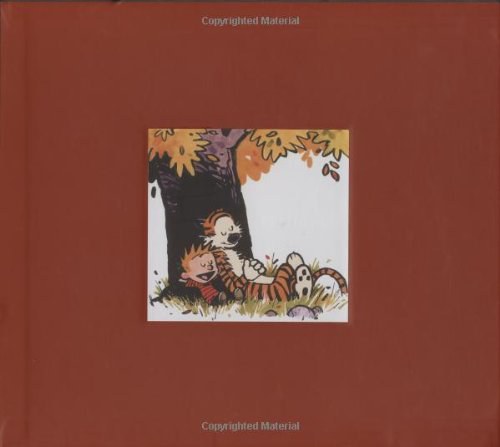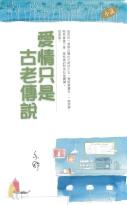
中国少数民族服饰(英文)
书刊介绍
中国少数民族服饰(英文) 内容简介
《中国少数民族服饰:英文》内容简介:Costume is the crystal of human wisdom as well as fruits out of their labor. During human being's long process of evolution and development, minority cos-tumes in China also have had their own changes and development, becoming the cultural symbol for China's 56 nationalities by decorating their living world.
Costume is a visual language and window for civilization.
中国少数民族服饰(英文) 本书特色
《中国少数民族服饰:英文》是中国民族多元文化丛书之一。
中国少数民族服饰(英文)中国少数民族服饰(英文)前言
Costume is the crystal of human wisdom as well as fruits out of their labor. During human being's long process of evolution and development, minority cos-tumes in China also have had their own changes and development, becoming the cultural symbol for China's 56 nationalities by decorating their living world.
Costume is a visual language and window for civilization. Minority costumesin China are rich in ornaments and beautiful in color. Some are long while others are short; some are simple while others are complicated. But as a whole, there is a difference between north robes and south skirts. The northern nomadic people living in the Mongolian Tableland, the Tibetan Tableland and Xinjiang Basingrassland, or the nationalities that have had the life of nomadism and hunting,have chosen their production and living ways belonging to the herding and hunt-ing civilizations as a reason of their living space in the north of the Great Wall for a long time with freezing cold tablelands, deserts, forests and grasslands,such as the Mongols, Tibetan, Ewenki, Oroqen, Manchu, Kazakh, and etc. Theywear robes and boots, which become the symbol for horse-riding nationalities.The minorities in the south living on rice economy are known for their skirts.Even the landforms vary in China's south central, south-west and south-east, asmost of the regions have a warm, humid and rainy climate, the minorities livingin these regions choose rice planting as their living method, such as Tong, Miao,Lisu, Buyi, Pumi, De'ang, Dai, Zhuang and Gaoshan, with their costumes suit-able for their daily life in the style, quality or color. Each nationality's costume is its self-identification. Skirts are popular in the southern minorities, whereasthe style, color and design vary greatly from each other. Dai's tube skirts, shortskirts in Hani and Jinuo, and skirts called "Bafuluoqun" in Va and Tujia have allbecome kinds of decorations and signs distinguishing themselves from others.The women of Shui make an even more outstanding difference from others by putting on skirts outside their long pants.
中国少数民族服饰(英文) 目录
PrefaceChapter I
Minority Costumes in North Eastern Regions and The Inner Mongolian Region
I. Mongolian Costumes
II. Manchu's Cheongsam and Korean Costumes
III. Unique Fish-Skin Clothing and Featured Skin Garments
IV. Hats and Boots for Northern Nationalities
Chapter II
Minority Costumes in North Western Regions
I. Islamic Simple Dress
II. Robes, Qiapan and Kupu in Nationalities in Xinjiang
III. Flexible Pullovers and Embroidered Garments in North Western Nationalities
IV. Yugur's Charming Costume and Tu's Bright Costume
V. Hats and Boots with Northern Characteristics
ChapterⅢ
Minority Costumes In South Western Regions
I. Robes for Multi-nationalities on the World Roof
II. Features of the Colorful "Southern Skirts"
II1. Pullovers and Festival Garments
IV. Rich Hair Styles and Hats
Chapter IV
Minority Costumes In South Central And South Eastern Regions
I. Costumes for Zhuang and Maonan
I1. Colorful Yao Costumes
II1. Tu's Xilankapu and She's Phoenix Costume
IV. Costumes for Li, Jing and Mulao Nationalities%
中国少数民族服饰(英文) 节选
The traditional Korean suit-dress has a feature of short coats and long skirts.The collar of the coat (zegaoli) is connected with the front into an oblique line,open with right front without buttons; long to the bosom, at the present coat'sthird button position. The skirt is as long as reaching to the knees or to the feetaccordingly. The sleeves have a large arc, with a butterfly knot using long silkribbon tying the two fronts. Cloth strips in various colors are used to embroiderthe collar lines and cuffs. Colorful silk and satin are embroidered in cuffs andfront edges of coats for young women and girls. The coat assorts with long skirt,setting off women's curving beauty. Their skirts are called "qima" in Korean,classified as tube skirts and tangling skirts which have the difference of longskirts and short skirts. The tube skirts sewed up, different from ones in other na-tionalities, as they have many fine pleats at the waist in order to suit the waist-body, connected above with a small white vest open in the front with buttonslike a pullover. This kind of skirts is as long as reaching the knees, suitable forlaboring and walking. The tangle skirt is wrapped for the lower body shaped likea helix; the left lower corner will be lifted and tucked into the girdle, suited witha white shirt inside. Young women are found of tube skirts and short skirts whileold women most of the time wear tangle skirts and long skirts. Yellow coatsand pink skirts are typical for traditional suit dress. Materials for making youngwomen's coats are very colorful.
中国少数民族服饰(英文) 目录
PrefaceChapter I
Minority Costumes in North Eastern Regions and The Inner Mongolian Region
I. Mongolian Costumes
II. Manchu's Cheongsam and Korean Costumes
III. Unique Fish-Skin Clothing and Featured Skin Garments
IV. Hats and Boots for Northern Nationalities
Chapter II
Minority Costumes in North Western Regions
I. Islamic Simple Dress
II. Robes, Qiapan and Kupu in Nationalities in Xinjiang
III. Flexible Pullovers and Embroidered Garments in North Western Nationalities
IV. Yugur's Charming Costume and Tu's Bright Costume
V. Hats and Boots with Northern Characteristics
ChapterⅢ
Minority Costumes In South Western Regions
I. Robes for Multi-nationalities on the World Roof
II. Features of the Colorful "Southern Skirts"
II1. Pullovers and Festival Garments
IV. Rich Hair Styles and Hats
Chapter IV
Minority Costumes In South Central And South Eastern Regions
I. Costumes for Zhuang and Maonan
I1. Colorful Yao Costumes
II1. Tu's Xilankapu and She's Phoenix Costume
IV. Costumes for Li, Jing and Mulao Nationalities%
中国少数民族服饰(英文) 节选
The traditional Korean suit-dress has a feature of short coats and long skirts.The collar of the coat (zegaoli) is connected with the front into an oblique line,open with right front without buttons; long to the bosom, at the present coat'sthird button position. The skirt is as long as reaching to the knees or to the feetaccordingly. The sleeves have a large arc, with a butterfly knot using long silkribbon tying the two fronts. Cloth strips in various colors are used to embroiderthe collar lines and cuffs. Colorful silk and satin are embroidered in cuffs andfront edges of coats for young women and girls. The coat assorts with long skirt,setting off women's curving beauty. Their skirts are called "qima" in Korean,classified as tube skirts and tangling skirts which have the difference of longskirts and short skirts. The tube skirts sewed up, different from ones in other na-tionalities, as they have many fine pleats at the waist in order to suit the waist-body, connected above with a small white vest open in the front with buttonslike a pullover. This kind of skirts is as long as reaching the knees, suitable forlaboring and walking. The tangle skirt is wrapped for the lower body shaped likea helix; the left lower corner will be lifted and tucked into the girdle, suited witha white shirt inside. Young women are found of tube skirts and short skirts whileold women most of the time wear tangle skirts and long skirts. Yellow coatsand pink skirts are typical for traditional suit dress. Materials for making youngwomen's coats are very colorful.
中国少数民族服饰(英文) 节选
The traditional Korean suit-dress has a feature of short coats and long skirts.The collar of the coat (zegaoli) is connected with the front into an oblique line,open with right front without buttons; long to the bosom, at the present coat'sthird button position. The skirt is as long as reaching to the knees or to the feetaccordingly. The sleeves have a large arc, with a butterfly knot using long silkribbon tying the two fronts. Cloth strips in various colors are used to embroiderthe collar lines and cuffs. Colorful silk and satin are embroidered in cuffs andfront edges of coats for young women and girls. The coat assorts with long skirt,setting off women's curving beauty. Their skirts are called "qima" in Korean,classified as tube skirts and tangling skirts which have the difference of longskirts and short skirts. The tube skirts sewed up, different from ones in other na-tionalities, as they have many fine pleats at the waist in order to suit the waist-body, connected above with a small white vest open in the front with buttonslike a pullover. This kind of skirts is as long as reaching the knees, suitable forlaboring and walking. The tangle skirt is wrapped for the lower body shaped likea helix; the left lower corner will be lifted and tucked into the girdle, suited witha white shirt inside. Young women are found of tube skirts and short skirts whileold women most of the time wear tangle skirts and long skirts. Yellow coatsand pink skirts are typical for traditional suit dress. Materials for making youngwomen's coats are very colorful.
相关推荐
-

中国名人故居游学馆:薰风南来·广州卷
中国名人故居游学馆:薰风南来·广州卷 本书特色 广州,这个城市,给我们的联想是现代化、物质化、对外开放,与经济紧密相联。政治总离不开经济,因此,许多政治名人纷纷...
-

外语磨蚀的影响因素研究
外语磨蚀的影响因素研究 本书特色 《外语磨蚀的影响因素研究》以中国外语学习者为研究对象,基于问卷调查、语言测试和认知实验所提供的数据资料,采用数据挖掘的方法,从...
-

婴童经济4.0
《婴童经济4.0》内容简介:本书是在采访了数十家婴童企业,分析了大量的行业数据,对婴童产业的共性进行了深入研究后的成果,本书能
-

圆运动顿悟-升降和解析经方
圆运动顿悟-升降和解析经方 内容简介 近代著名医家彭子益先生的圆运动理论精准地描述了天地人身之气运动的真实情况。本书则是一部运用中医“升降和&rdq...
-

勒包斋娃研究-景颇族创世史诗的综合性文化形态
勒包斋娃研究-景颇族创世史诗的综合性文化形态 内容简介 本书以景颇族创世史诗《勒包斋娃》为研究对象,同时结合其他民族的创世神话,讨论了史诗友所描绘的景颇族先民的...
-

文化的价值(全译彩图本)
文化的价值(全译彩图本) 内容简介 本书是作者1914年至1951年所作的思想随笔,内容涉及哲学、宗教、艺术、音乐、建筑等方面。文化的价值(全译彩图本) 目录 ...
-

永不拓宽的街道
永不拓宽的街道 内容简介 陈丹燕以其独特的个人化视角,精选了上海永不拓宽的街道中的18条,着力于描写在这些街道上的带有标志性的人和事。这些人是上海人中的少数,却...
-

思想时代
思想时代 本书特色 陈寅恪研究二题,人性人情总相通,当代清华师弟,仁者之怀,胡适的讲步论,胡适从传统文化发掘自由资源,胡适重才济人之德,杜威与五四,关于胡适评价...
-

天城记忆-美国传教士费佩德清末民初拍摄的杭州西湖老照片
天城记忆-美国传教士费佩德清末民初拍摄的杭州西湖老照片 本书特色 《天城记忆:美国传教士费佩徳清末民初拍摄的杭州西湖老照片》是由山东人民出版社出版的。天城记忆-...
-

赤坎古镇
赤坎古镇 本书特色 一个四周潭江环绕、榕树婆娑的岭南古镇,骑楼的多姿开放与碉楼的森严封闭组成它双面的性格,在独特的家族文化和西洋风习的撞击下,演绎了一个个荡气回...
-

橡皮章生活雜貨
沒想到毫不起眼的橡皮擦,只要加點巧思與創意,就能刻製出風格獨具的圖案印章。而可以無限制、重複使用的橡皮圖章,不僅能夠蓋印在紙張上,只要選用特殊染劑,甚至連布料、...
-

老照片(第40辑)
老照片(第40辑) 本书特色 摄影术的诞生,为人们认识历史提供了一种生动而稳定的参照。较之于文字的记述,照片往往更直观,也更确定,随着照相机快门被按上的一瞬间,...
-

印度作家作品评论集-季羡林学术著作选集
印度作家作品评论集-季羡林学术著作选集 本书特色 本卷编选的文章涉及梵语文学的有17篇,涉及印度其他语言文学的有10篇,*后一篇文章《印度文学在中国》则论述印度...
-

创意中国
创意中国 本书特色 与数字技术相关的动漫、网游等产业可能会成为中国创意产业的切入点,成为中国各大城市发展创意产业的突破口。而影视、广播、出版等在内的传媒产业也开...
-

报道伊斯兰
《报道伊斯兰》内容简介:本书从伊朗人质事件、波斯湾战争,到纽约世贸中心大楼爆炸案,西方世界一直被一个名叫“伊斯兰”的幽魂苦
-

闲情偶寄
闲情偶寄 内容简介 《闲情偶寄》是清代著名文学家李渔一生艺术和生活经验的总结,论及戏曲理论、妆饰打扮、园林建筑、器物古玩、饮食烹调、竹木花卉、养生医疗等诸多方面...
-

王云五文集-四角号码检字法-1
王云五文集-四角号码检字法-1 本书特色 《四角号码检字法(精)》讲述王云五先生创建的四角号码检字法,即用数字替代笔形和部首。他以汉字的四个角的笔划为基本点,以...
-

三十年河东 三十年河西
三十年河东 三十年河西 本书特色 季羡林自言:到了耄耋之年,忽发少年狂,一系列引人关注的怪论、奇思问世。在季先生的这些怪论奇思中,影响*大的莫过于本书阐述的“三...
-

陈原语言学论著(共三卷)
陈原语言学论著(共三卷) 本书特色 ★ 32开平装,辽宁教育出版社出版★ 俞晓群、王之江、王丽君责任编辑,董学军书籍设计★ 《语言与社会生活》开创了我国社会语言...
-

舆论陷阱:媒体危机应对指南
《舆论陷阱:媒体危机应对指南》内容简介:这是个人人都是新闻记者的时代,舆论压力空前强大。作者根据多年新闻记者生涯的职业背景





